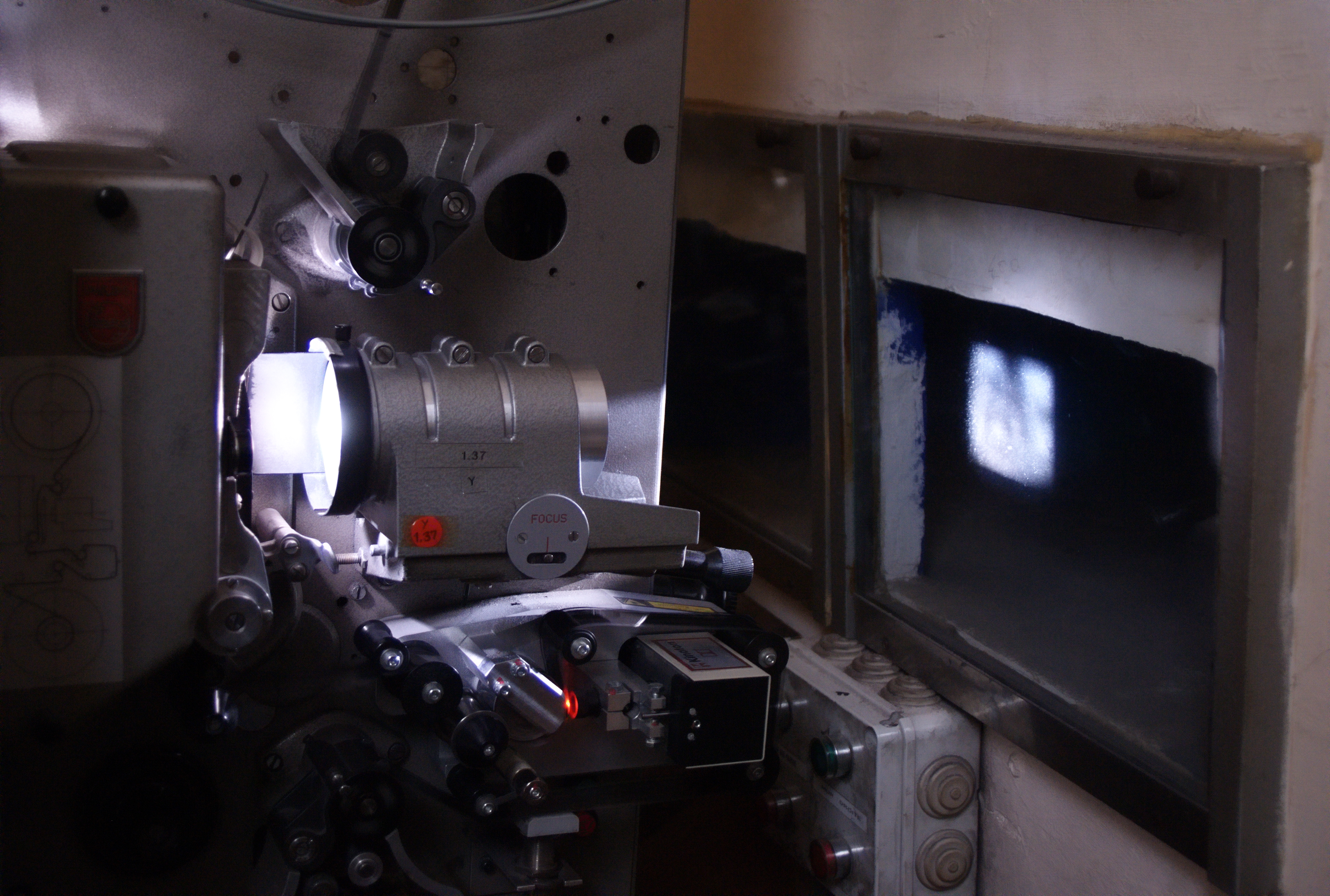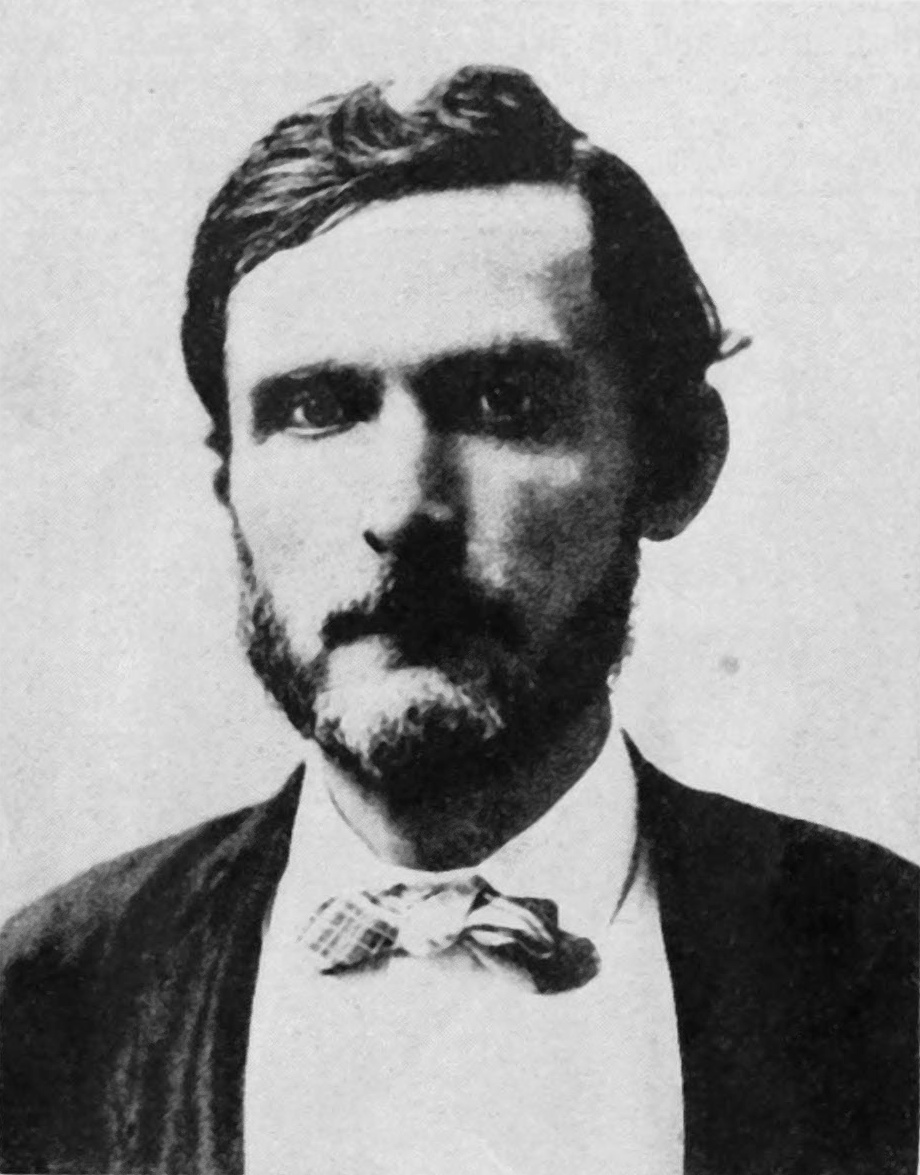|
Latham Loop
The Latham Loop is used in film projection and image capture. It isolates the filmstrip from vibration and tension, allowing movies to be continuously shot and projected for extended periods. Invention of the Latham loop is usually credited to film pioneers William Kennedy Laurie Dickson and Eugene Lauste. Both men worked with Woodville Latham, developing a motion picture camera and projector in 1895. Dickson later acknowledged Lauste as inventor of the loop, though rival claims were made in support of another Latham associate, engineer Enoch J. Rector, who used the technology to shoot an hour-and-a-half-long documentary film, ''The Corbett-Fitzsimmons Fight'', in 1897. Woodville Latham applied for a patent on June 1, 1896. In his patent application, Latham wrote, :In order that these parts f the film projectormay operate as described, it is essential that the loop of slack film be maintained at all times ready for the intermittingly-acting device and also that the slack-manipu ... [...More Info...] [...Related Items...] OR: [Wikipedia] [Google] [Baidu] |
Meo 5 Movie Projector Mechanismus
Meo or MEO may refer to: * Marco Enríquez-Ominami (b. 1973), Chilean politician * Medium Earth orbit, is the region of space around Earth above low Earth orbit * Meo (ethnic group), Muslim inhabitants of Mewat, a region in North-Western India * Méo, a town in Ivory Coast * MEO (telecommunication company), a brand of Portugal Telecom used for services targeting individuals and homes * Miao people (from transcription), group of peoples living in Southern China and Southeast Asia * Kedah Malay Kedah Malay or Kedahan (); also known as ''Pelat Utara'' or ''Loghat Utara'' ('Northern Dialect') or as it is known in Thailand, Syburi Malay () is a variety of the Malayic languages mainly spoken in the northwestern Malaysian states of Perlis ... (ISO 639-3 code), a variety of the Malayan languages See also * Meos (other) {{disambiguation ... [...More Info...] [...Related Items...] OR: [Wikipedia] [Google] [Baidu] |
Film Projector
A movie projector is an opto-mechanical device for displaying motion picture film by projecting it onto a screen. Most of the optical and mechanical elements, except for the illumination and sound devices, are present in movie cameras. Modern movie projectors are specially built video projectors. (see also digital cinema) Many projectors are specific to a particular film gauge and not all movie projectors are film projectors since the use of film is required. Predecessors The main precursor to the movie projector was the magic lantern. In its most common setup it had a concave mirror behind a light source to help direct as much light as possible through a painted glass picture slide and a lens, out of the lantern onto a screen. Simple mechanics to have the painted images moving were probably implemented since Christiaan Huygens introduced the apparatus around 1659. Initially candles and oil lamps were used, but other light sources, such as the argand lamp and limelight we ... [...More Info...] [...Related Items...] OR: [Wikipedia] [Google] [Baidu] |
William Kennedy Laurie Dickson
William Kennedy Laurie Dickson (3 August 1860 – 28 September 1935) was a British inventor who devised an early motion picture camera under the employment of Thomas Edison. Early life William Kennedy Dickson was born on 3 August 1860 in Le Minihic-sur-Rance, Brittany, France. His mother was Elizabeth Kennedy-Laurie (1823?–1879) who may have been born in Virginia. His father was James Waite Dickson, a Scottish artist, astronomer and linguist. James Dickson claimed direct lineage from the painter William Hogarth, and from Judge John Waite, the man who sentenced King Charles I to death. Inventor and film innovator At age 19 in 1879, William Dickson wrote a letter to American inventor and entrepreneur Thomas Edison seeking employment. He was turned down. That same year Dickson, his mother, and two sisters moved from Britain to Virginia. In 1883 he was finally hired to work at Edison's laboratory in Menlo Park, New Jersey. In 1888, Edison conceived of a device that would d ... [...More Info...] [...Related Items...] OR: [Wikipedia] [Google] [Baidu] |
Eugene Lauste
Eugène Augustin Lauste (17 January 1857 in Montmartre, France – 27 June 1935 in Montclair, New Jersey) was a French inventor instrumental in the technological development of the history of cinema. By age 23 he held 53 French patents. He emigrated to the United States in 1886 where he worked as an assistant to French-born William Kennedy Laurie Dickson at the Edison Laboratories. Lauste contributed to the development of the leading predecessor to the motion picture projector, the Kinetoscope, an invention for which Edison would claim credit. Lauste left Edison in 1892. Lauste also worked on an idea for a combustible gasoline engine; he did develop a working model in the 1890s but gave up when told that such a noisy device would never be widely used. He then worked with Major Woodville Latham, for whom he engineered the Eidoloscope and assisted with the design of the Latham loop. (Later, Dickson would credit Lauste with the loop's invention.) The Eidoloscope was demonstrated f ... [...More Info...] [...Related Items...] OR: [Wikipedia] [Google] [Baidu] |
Woodville Latham
Major Woodville Latham (1837–1911) was an ordnance officer of the Confederacy during the American Civil War and professor of chemistry at West Virginia University. He was significant in the development of early film technology. Woodville Latham was the father of Grey Latham and Otway Latham, owners of a kinetoscope parlor in New York City. In December 1894 Latham and his two sons formed the Lambda Company at 35 Frankfort Street, employing Eugène Lauste, a former Thomas Edison employee, as well as motion picture pioneer William Kennedy Dickson. Dickson would not leave Edison's employ until April 1895 and initially lent his expertise to the Lathams in secret. The Eidoloscope was demonstrated for members of the press on April 21, 1895, and opened to the paying public on May 20, in a lower Broadway store with films of the Griffo-Barnett prize boxing fight, taken from Madison Square Garden's roof on May 4. In 1898 the Lathams abandoned motion pictures and soon lost their patents ... [...More Info...] [...Related Items...] OR: [Wikipedia] [Google] [Baidu] |
Enoch J
Enoch () ''Henṓkh''; ar, أَخْنُوخ ', Qur'ān.html"_;"title="ommonly_in_Qur'ān">ommonly_in_Qur'ānic_literature__'_is_a_biblical_figure_and_Patriarchs_(Bible).html" "title="Qur'ānic_literature.html" ;"title="Qur'ān.html" ;"title="ommonly in Qur'ān">ommonly in Qur'ānic literature">Qur'ān.html" ;"title="ommonly in Qur'ān">ommonly in Qur'ānic literature ' is a biblical figure and Patriarchs (Bible)">patriarch prior to Noah's flood, and the son of Jared (biblical figure), Jared and father of Methuselah. He was of the Antediluvian period in the Hebrew Bible. The text of the Book of Genesis says Enoch lived 365 years before he was taken by God. The text reads that Enoch "walked with God: and he was no more; for God took him" (), which is interpreted as Enoch's entering heaven alive in some Jewish and Christian traditions, and interpreted differently in others. Enoch is the subject of many Jewish and Christian traditions. He was considered the author of the Book of ... [...More Info...] [...Related Items...] OR: [Wikipedia] [Google] [Baidu] |
Documentary Film
A documentary film or documentary is a non-fictional film, motion-picture intended to "document reality, primarily for the purposes of instruction, education or maintaining a Recorded history, historical record". Bill Nichols (film critic), Bill Nichols has characterized the documentary in terms of "a filmmaking practice, a cinematic tradition, and mode of audience reception [that remains] a practice without clear boundaries". Early documentary films, originally called "actuality films", lasted one minute or less. Over time, documentaries have evolved to become longer in length, and to include more categories. Some examples are Educational film, educational, observational and docufiction. Documentaries are very Informational listening, informative, and are often used within schools as a resource to teach various principles. Documentary filmmakers have a responsibility to be truthful to their vision of the world without intentionally misrepresenting a topic. Social media platfor ... [...More Info...] [...Related Items...] OR: [Wikipedia] [Google] [Baidu] |
The Corbett-Fitzsimmons Fight
''The Corbett-Fitzsimmons Fight'' is an 1897 documentary film directed by Enoch J. Rector depicting the 1897 boxing match between James J. Corbett and Bob Fitzsimmons in Carson City, Nevada on St. Patrick's Day. Originally running for more than 100 minutes, it was the longest film released to date; as such, it was the world's first feature film. The technology that allowed this is known as the Latham loop. Rector claimed to have invented the device, but its invention is disputed. He used three such equipped cameras placed adjacently and filming on 63mm nitrate film. Only fragments of the film survive. The known fragments were transferred in the 1980s from a print owned by Jean A. LeRoy of New York City, the transfer done on a specially built optical printer to convert the film to 35mm film. The film was also the first to be shot in widescreen, with an aspect ratio of about 1.65:1. According to Dan Streible, ''The Corbett-Fitzsimmons Fight'' is "one of the earliest individua ... [...More Info...] [...Related Items...] OR: [Wikipedia] [Google] [Baidu] |
Thomas Edison
Thomas Alva Edison (February 11, 1847October 18, 1931) was an American inventor and businessman. He developed many devices in fields such as electric power generation, mass communication, sound recording, and motion pictures. These inventions, which include the phonograph, the motion picture camera, and early versions of the electric light bulb, have had a widespread impact on the modern industrialized world. He was one of the first inventors to apply the principles of organized science and teamwork to the process of invention, working with many researchers and employees. He established the first industrial research laboratory. Edison was raised in the American Midwest. Early in his career he worked as a telegraph operator, which inspired some of his earliest inventions. In 1876, he established his first laboratory facility in Menlo Park, New Jersey, where many of his early inventions were developed. He later established a botanical laboratory in Fort Myers, Florida, in co ... [...More Info...] [...Related Items...] OR: [Wikipedia] [Google] [Baidu] |
American Mutoscope And Biograph Company
The Biograph Company, also known as the American Mutoscope and Biograph Company, was a motion picture company founded in 1895 and active until 1916. It was the first company in the United States devoted entirely to film production and exhibition, and for two decades was one of the most prolific, releasing over 3000 short films and 12 feature films. During the height of silent film as a medium, Biograph was America's most prominent film studio and one of the most respected and influential studios worldwide, only rivaled by Germany's UFA, Sweden's Svensk Filmindustri and France's Pathé. The company was home to pioneering director D. W. Griffith and such actors as Mary Pickford, Lillian Gish, and Lionel Barrymore. Founding The company was started by William Kennedy Dickson, an inventor at Thomas Edison's laboratory who helped pioneer the technology of capturing moving images on film. Dickson left Edison in April 1895, joining with inventors Herman Casler, Henry Marvin and busin ... [...More Info...] [...Related Items...] OR: [Wikipedia] [Google] [Baidu] |
The Atlantic
''The Atlantic'' is an American magazine and multi-platform publisher. It features articles in the fields of politics, foreign affairs, business and the economy, culture and the arts, technology, and science. It was founded in 1857 in Boston, as ''The Atlantic Monthly'', a literary and cultural magazine that published leading writers' commentary on education, the abolition of slavery, and other major political issues of that time. Its founders included Francis H. Underwood and prominent writers Ralph Waldo Emerson, Oliver Wendell Holmes Sr., Henry Wadsworth Longfellow, Harriet Beecher Stowe, and John Greenleaf Whittier. James Russell Lowell was its first editor. In addition, ''The Atlantic Monthly Almanac'' was an annual almanac published for ''Atlantic Monthly'' readers during the 19th and 20th centuries. A change of name was not officially announced when the format first changed from a strict monthly (appearing 12 times a year) to a slightly lower frequency. It was a mo ... [...More Info...] [...Related Items...] OR: [Wikipedia] [Google] [Baidu] |







